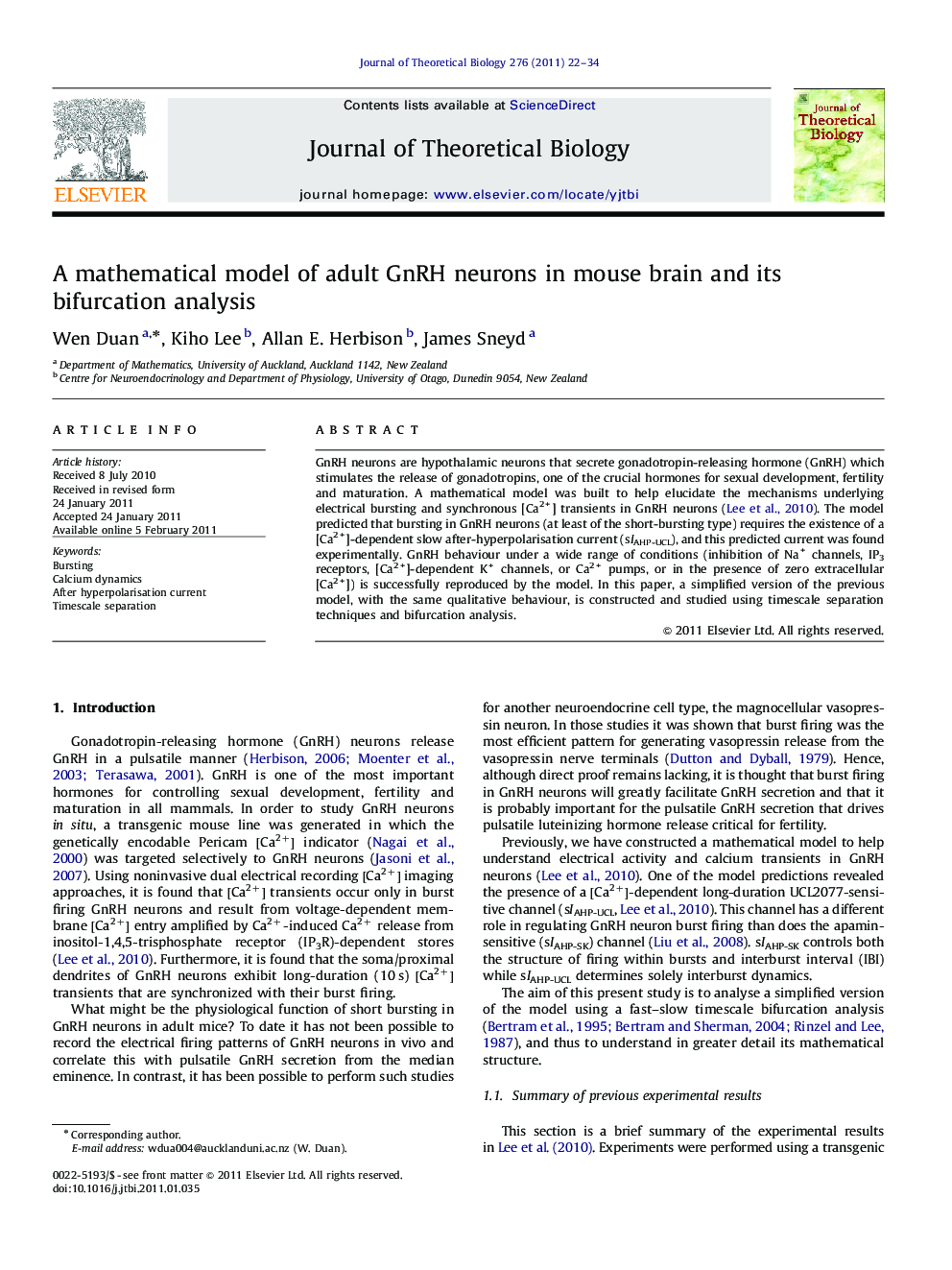| Article ID | Journal | Published Year | Pages | File Type |
|---|---|---|---|---|
| 4497172 | Journal of Theoretical Biology | 2011 | 13 Pages |
GnRH neurons are hypothalamic neurons that secrete gonadotropin-releasing hormone (GnRH) which stimulates the release of gonadotropins, one of the crucial hormones for sexual development, fertility and maturation. A mathematical model was built to help elucidate the mechanisms underlying electrical bursting and synchronous [Ca2+] transients in GnRH neurons (Lee et al., 2010). The model predicted that bursting in GnRH neurons (at least of the short-bursting type) requires the existence of a [Ca2+]-dependent slow after-hyperpolarisation current (sIAHP-UCL), and this predicted current was found experimentally. GnRH behaviour under a wide range of conditions (inhibition of Na+ channels, IP3 receptors, [Ca2+]-dependent K+ channels, or Ca2+ pumps, or in the presence of zero extracellular [Ca2+]) is successfully reproduced by the model. In this paper, a simplified version of the previous model, with the same qualitative behaviour, is constructed and studied using timescale separation techniques and bifurcation analysis.
